February 14, 2024
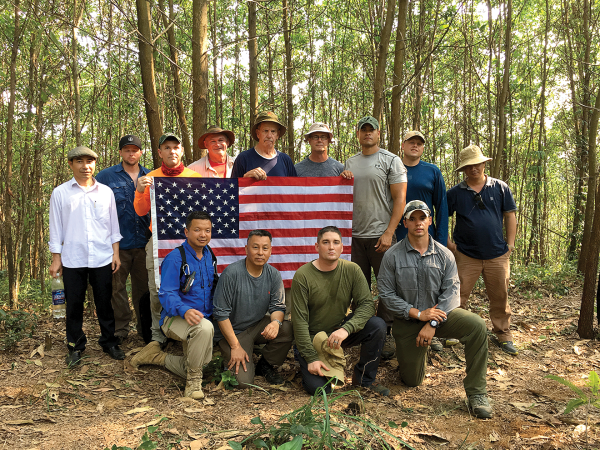
The US Defense Department’s POW/MIAS search team displayed the American flag on Duong Se Hill after the search ended unsuccessfully. A Vietnamese Army colonel stepped in for the shot.
At midday on July 29, 1968, 18-year-old Mike Cunningham, of Roslindale, Massachusetts, a rifleman with the US Army’s Americal Division, was cleaning up an old foxhole below the rim of a hill in Tien Phuoc Province in central Vietnam when he was told that a helicopter carrying hot food was headed to his company’s position.
“Knowing that whoever unloaded the chopper would be first in the chow line, I started to run up the hill to greet its arrival,” he told the Reporter in an interview last week,” but when I looked over my shoulder, I was stunned to find myself in the direct flight path of the copter. I dropped to the ground and covered up as it passed over, and seconds later I heard a terrific explosion. Figuring we were under mortar assault, I rolled down the hill and tumbled into my foxhole as cover for the next explosion, but only silence, an eerily unnerving silence, followed.”
In short order, that interlude was shattered by the voice of Charlie Company commander, Capt. Chris Martin, loudly pleading for help. Writing about this tragic episode for the Americal Journal in 2017, Cunningham tells of jumping out of his foxhole and running up to the captain, who was standing close to the battered chopper, which was lying on its side, and pointing to the ground, saying, “He’s here, he’s here. Greene is buried right here.”
He was talking about his radioman, 21-year-old Corporal Donald Greene, of Savin Hill, Massachusetts, who had been with him when the explosion blew everything into chaos. Cunningham began digging frantically, pushing loose dirt away until Cpl. Greene’s back was exposed. A medic came over to the site and the two of them lifted his torso out of the ground.
“There were no visible wounds,” Cunningham wrote, “but his body was lifeless. The medic shook his head and said it was too late.”
See US Army information on Cpl. Greene below.
The final toll on Charlie Company that day by the bomb set on Duong Se Hill and set off remotely by Vietnamese partisans below was three dead, ten wounded, including the chopper crew, and one missing, Staff Sgt. Jerry Auxier.
Those able to do so made several sweeps of the area searching for him, to no avail. The next morning, the soldiers were ordered off the hill. They left to the echoes of the bombing and full of questions rife with anguish: Where was Jerry Auxier? Was he buried alive? Was he blown to smithereens? Was he captured alive?
Therein lies the rest of the story.
•••
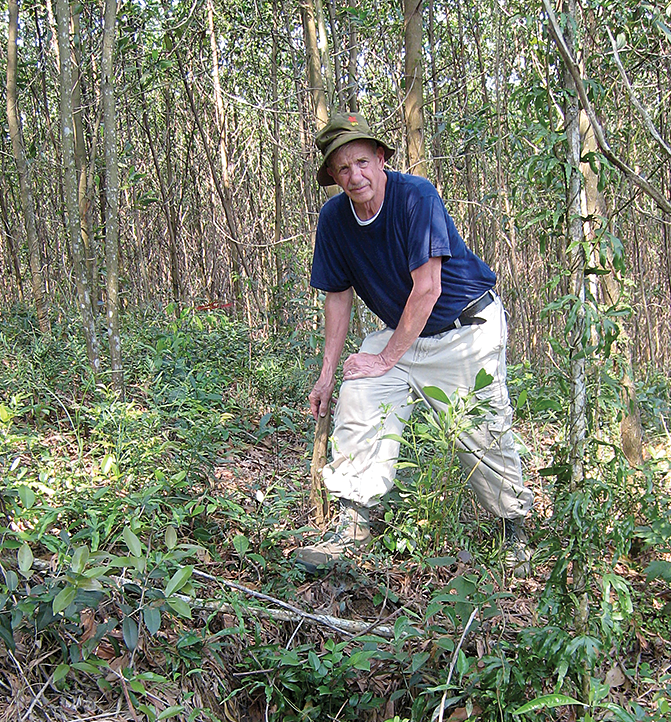
Some 49 years after Mike Cunningham survived a bombing in Vietnam that killed three of his mates and left one missing, he returned to scene on a renewed search for his MIA pal and located the foxhole that had kept him safe that day.
“There are two no-nos for the military in war,” says Mike Cunningham. “You don’t go back to where you had been engaged before, and you don’t leave anyone behind.” He has made the latter admonition the driving force of his life since that dreadful day in July 1968, and his old mate, SSgt. Auxier, the focus of that intensity.
“I think of Jerry Auxier of Dixie, West Virginia, every day of my life,” said Cunningham in his Reporter interview. “I feel guilty. Here I am 49 years later enjoying life, and he’s still missing.” For all that, an extensive record will show that the former Pvt. Cunningham, who spent decades working as an inspector with the US Customs Service after leaving the Army in late 1970, never stopped looking for answers to SSgt. Auxier’s fate. In 2015, he decided he needed to go back to where he disappeared and begin searching anew.
At several points over the next two years, getting all the approvals for this particular journey back to Duong Se Hill took on the markings of a Mission Impossible. Cunningham thought that given his remarkable experiences in Vietnam, US Sen. John McCain might be helpful in getting an update for him on SSgt. Auxier’s status, but that request gained no traction. US Sen. John D. Rockefeller V, of West Virginia, helped a bit by sending the request to the Department of Defense (DOD), where it finally hit paydirt in the person of Dr. James Cloninger, an archivist and historian with the department’s POW/MIA Accounting Agency (DPAA).
Red tape lay ahead, but by Feb. 28, 2017, he was in Hawaii being briefed by DOD officials, and by early March he was in a hotel in downtown Da Nang asking himself, “Is this for real? Was I really back in Vietnam about to partake in the adventure of my life?”
So much for that no-no about going back to where you had been engaged before.
•••
The ten-person team that DPAA had assembled was first class “all the way,” said Cunningham, who was No. 11. “They brought their own distinct talents to the mission:
Sgt. First Class Marcus Taylor, an Army Ranger out of Kansas, was the leader and his assistant was Sgt. First Class Christopher Varner of West Virginia. They were joined by specialists in linguistics, medicine, anthropology, archaeology, history, and the discrete art of identification of airplane parts that keep pilots and crews safe.
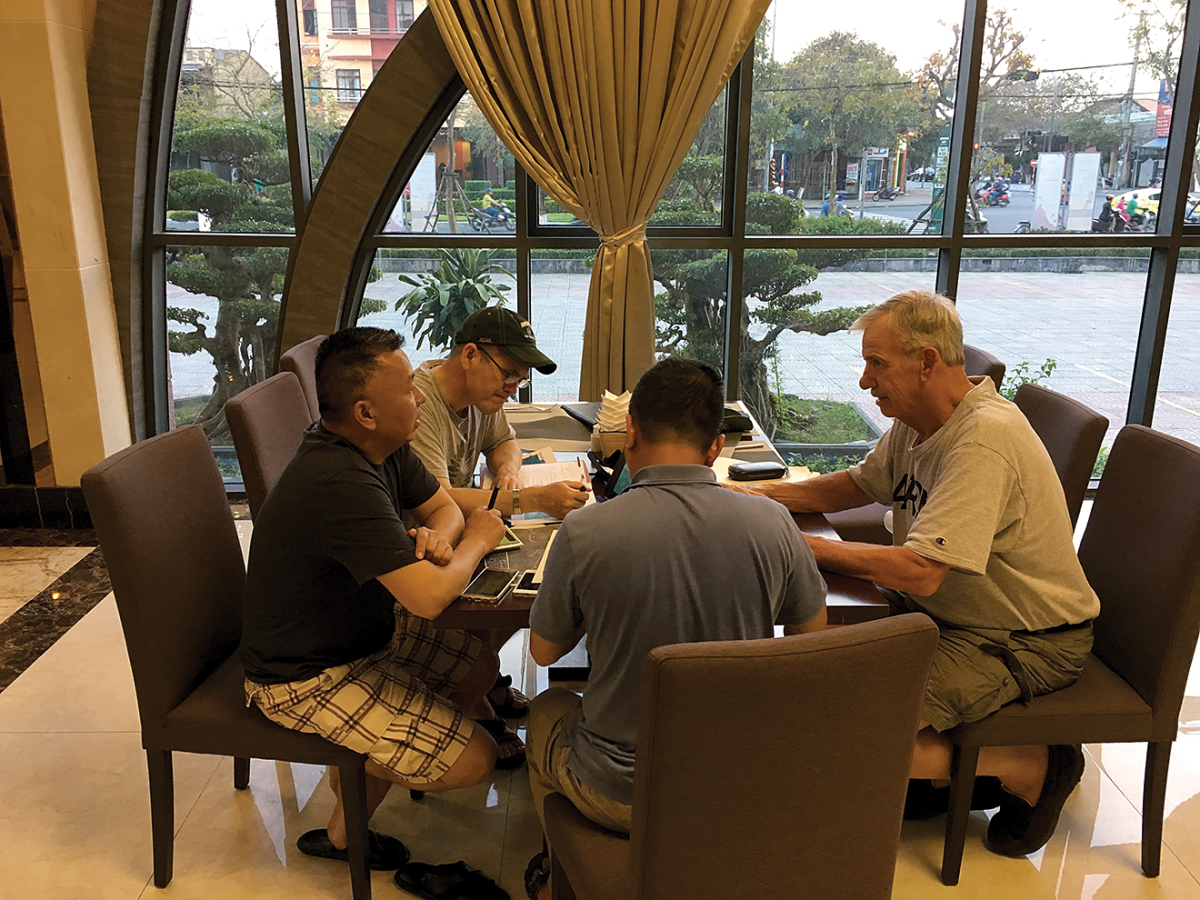
Lots of planning and double-checking of files, letters, and journals took up the team’s time before the hike up Duong Se Hill on March 15, 2017.
After talking with Cunningham about his memories of July 29, 1968, Cloninger told him that DOD was looking into reopening the investigation into the Auxier case and maybe sending a team to Vietnam for more research on it and several other MIA searches. Cunningham quickly volunteered for a spot on the team, and after some time went by, he was asked to join the mission.
There was a slight delay during which some of the team went off for a few days to help with the search for another missing soldier that proved unsuccessful and Cunningham and a few others were left to explore the local landscape (and other interesting places). At one point, he found himself helping students at Da Nang University write their research papers.
Finally, in early March, the team set out for a place called Tam Ky, and from there the next day to Duong Se Hill, Mike Cunningham’s personal holy grail, where he prayed a miracle would occur. For the rest of that day and through the evening hours, Cunningham said, “the team scrutinized maps, aerial photos, after-action reports, company and battalion reports. Personally, recounting my experiences of 49 years in such vivid detail was both draining and emotional for me, and hard, too.”
There’s little reason for this writer to tell readers what Mike Cunningham told me and the readers of the Americal Journal seven years ago about what happened. He knows it all by heart, a heart that never stops aching, he says.
“In the morning of March 15, 2017, we piled into our vehicles and headed west into the mountains of Queson Valley. After about two hours, we came to the base of the hill we were met by a contingent of Vietnamese, some of them workers there to help clear the area, and some of them government officials. … We climbed the hill in column formation and once we reached the top, I began slowly walking around, gradually expanding my circle. I saw the crater caused by the bomb explosion; I saw numerous foxholes on the top and came upon some along the perimeter that were overgrown with vegetation and partially collapsed, but they were foxholes, all manned 49 years ago by my company, Charlie Company.
“I broke down. I collapsed to the ground and began weeping. My body was trembling, and I felt the comforting presence of others.”
Eventually, Cunningham had traversed the entire hill. He found the foxhole that he tumbled into for safety that long ago July day, sat down beside it, and gazed into the distance. “Everything seemed to be exactly as I remembered it,” he said.
A short distance away from his reverie, news was happening. One of the team members had interviewed local residents, some of whom said they were the militia fighters in the summer of ’68 who had planted the bomb atop Duong Se Hill.
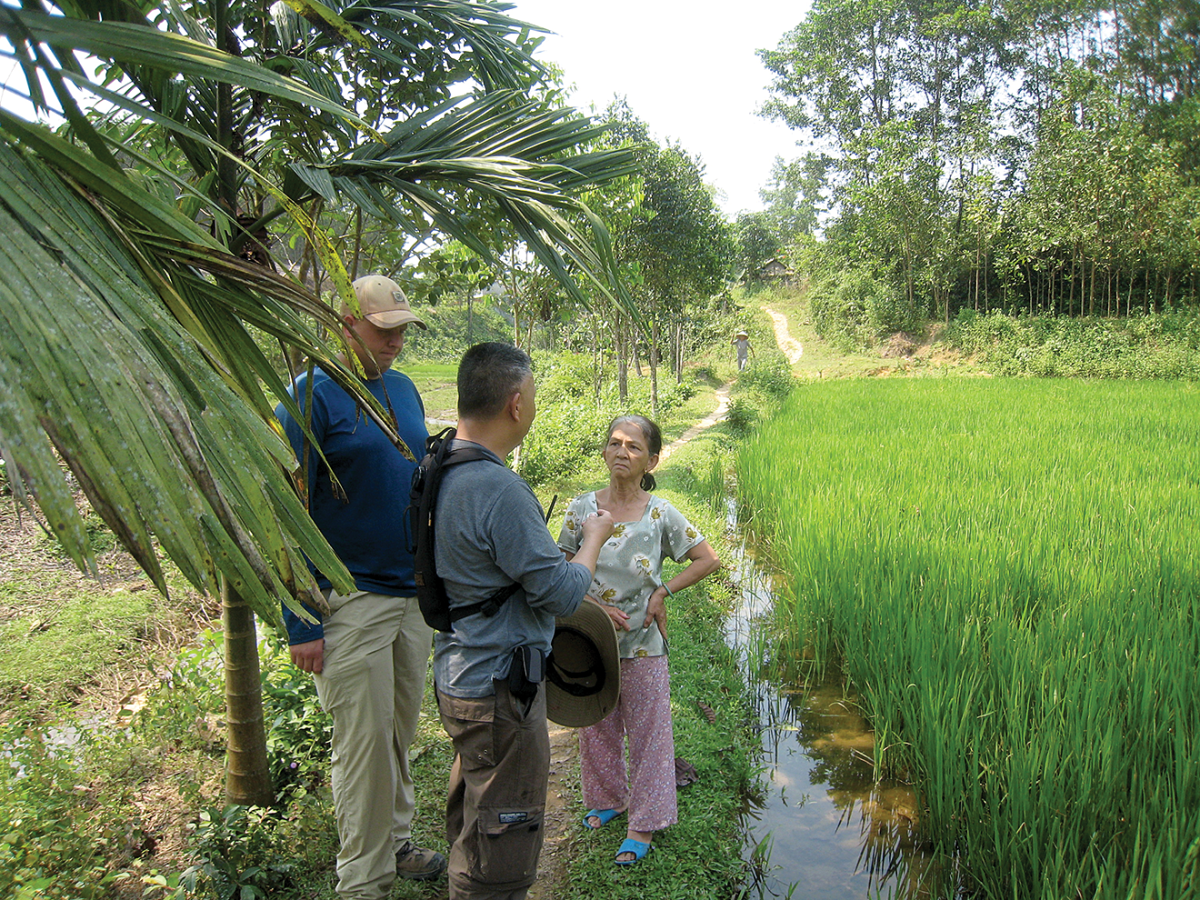
Stopping along a village trail to chat with a resident who had come by to check things out.
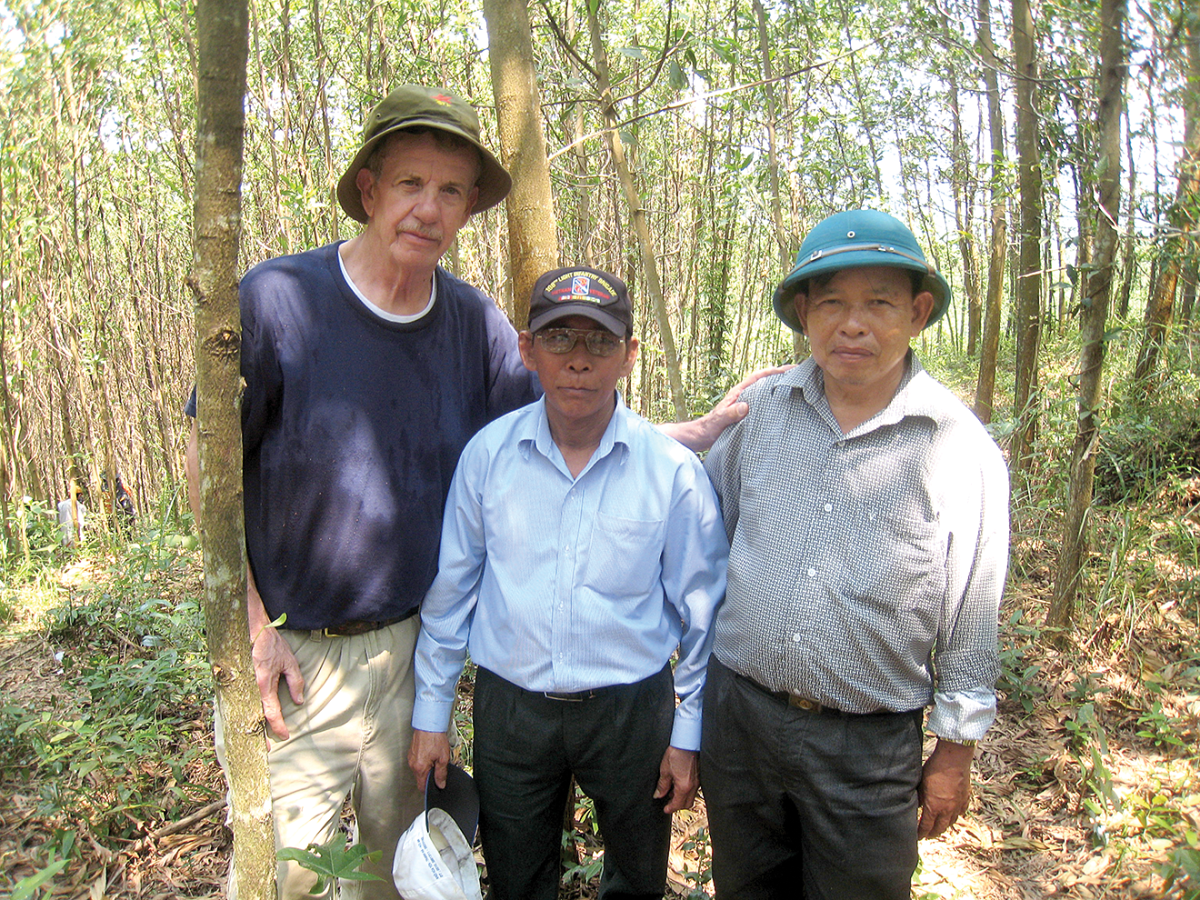
Mike Cunningham with two former enemy soldiers, one of whom is wearing the cap of the 198th Light Infantry Brigade that the visitor had given him.
All photos courtesy of Mike Cunningham.
‘It was a spine-tingling moment,” Cunningham recalled in his Americal Journal essay:
“I later met the men responsible for placing and exploding the bomb that killed and wounded so many of the men of Charlie Company. … We tried to kill each other 49 years ago, and now we were shaking hands, smiling, hugging each other, and taking pictures. I gave the gentleman who ignited the bomb a hat from the 198th Light Infantry Brigade and he took off his hat and put that one on.”
Next up was the critical task of surveying the area for physical evidence documenting the claim that we had found the hill where Cpl. Greene had been killed, and from which SSgt. Auxier had seemingly disappeared.
First, the hill was swept by metal detectors and all the findings were identified with little flags, then all the team’s members grabbed trowels, dropped to their knees, and began digging. They uncovered most of what they had been looking for – bomb fragments, pieces of the helicopter skin, a turbine blade, and M-16 and M-60 rounds, but no sign of SSgt. Auxier’s remains and no sign of evidence leading to another possible conclusion. It was time to go home, with one last salute to Company Charlie’s fallen soldiers.
The long-searching Mike Cunningham walked off Duong Se Hill thinking that “we could all be proud of ourselves for never giving up. Our country, unlike many other countries still searches for her POWs and MIAs. It’s a fact reassuring to all our heroic troops.”
•••
Is that all there is, at last, to the question of what happened to SSgt. Peter Auxier on July 29, 1968? Mike Cunningham retains his posture that the US Army never gives up. In his 2017 paper, he left open the possibility that all the materiel that the DPAA team brought back that year might prompt the DOD to order an excavation. But there is little activity toward that purpose at this time in 2024, he says ruefully.
Editor’s Note: This account is derived from Mike Cunningham’s interviews with the Dorchester Reporter and from a lengthy recollection he wrote in for Americal Journal, the official publication of the Americal Division Veterans Association. He is scheduled to talk about his long search at the Codman Square Library, where he teaches citizenship classes, on Feb. 26, at 6 p.m.
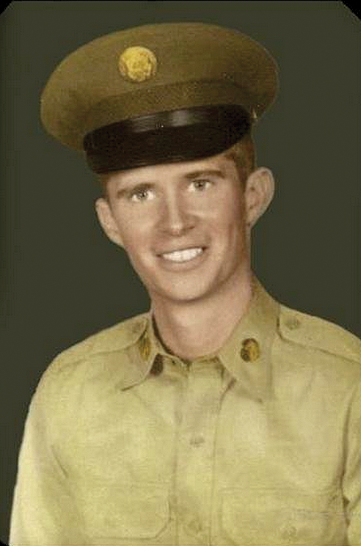
US Army Corporal
Donald Joseph Greene
March 30, 1947 – July 29, 1968
US Army Corporal Donald J. Greene, of the Savin Hill neighborhood in Boston, Massachusetts, died of “wounds from an explosive device” in Quang Tin province in Vietnam on July 29, 1968. At age 21, he was serving as a radioman to Capt. Chris Martin, commander of Charlie Company, 1st Battalion, 46th Infantry Regiment, 198th Light Infantry Brigade, Americal Division.
He was awarded the Combat Infantryman Badge; the Bronze Star Medal (Merit); the Purple Heart; the National Defense Service Medal, the Vietnam Service Medal; and the Vietnam Campaign Medal.
Cpl. Greene is buried in Mt. Hope Cemetery in Mattapan. His name is inscribed on Panel W50, Line 30, of the Vietnam Veterans Memorial Wall in Washington, D.C.
Cpl. Greene’s photo is from the Vietnam Veterans Memorial Fund’s exhibit, The Wall of Faces.
Author will speak at Codman Sq. Library on Feb. 26, at 6 p.m.
Michael H. Cunningham, 74, is the author of four books. His first, “Walking Point,” tells the story about his life as an infantryman in wartime Vietnam. His second, “In Safe Hands,” chronicles his three-decade career in the US Customs Service, with stories about drug smuggling, money laundering, people smuggling, and terrorist-related events. His other two volumes, “Wake of the Warrior” and “Fear No Evil,” are novels about maritime terrorism based on his real-life experiences.
A father of 3, a grandfather to 15, and a great-grandfather to 4, the author lives in Norwood, Mass. When not writing or researching material for his next book, Mr. Cunningham is actively involved in assisting returning veterans acclimate back into civilian life and in philanthropic projects in Vietnam.


